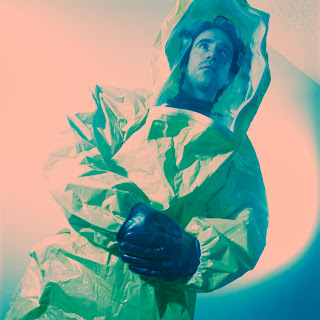 There are many situations where people at work can have direct skin contact with chemicals, particularly hand contact. It is often taken for granted that tasks such as cleaning will involve wiping down with cloths, or something similar, soaked with a solvent or other chemical which are held in the hand. Many of these chemicals can cause skin problems or can be absorbed through the skin contributing to the overall body burden. The panacea in such cases is to provide chemical protective gloves. The trouble is, this can create more problems than it solves.
There are many situations where people at work can have direct skin contact with chemicals, particularly hand contact. It is often taken for granted that tasks such as cleaning will involve wiping down with cloths, or something similar, soaked with a solvent or other chemical which are held in the hand. Many of these chemicals can cause skin problems or can be absorbed through the skin contributing to the overall body burden. The panacea in such cases is to provide chemical protective gloves. The trouble is, this can create more problems than it solves.With any personal protective equipment it is important to understand the limitations and know how and when the protection is likely to fail, because when it does it "fails to danger" - there is no back up. In the case of gloves, and other chemical protective clothing, failure can occur in three main ways
- penetration -where there is physical damage to the material resulting in a physical breach in the protection
- degradation - where the glove material is attacked by the chemical or is affected by other factors such as sunlight
- permeation - where the molecules of the chemical work their way through the molecules that make up the glove material
Many chemicals, particularly common solvents such as trichloroethylene, toluene and xylene pass through most common polymer materials very rapidly. Depnding on the glove material and design, the breakthrough time is can be as low as 10 minutes and rarely greater than two hours. If gloves have to be used, it's important to make sure that the "right" one has been selected - one that will offer appropriate protection against the chemical of concern. The breakthrough time gives the effective usage time for the glove which should be changed on ths basis.
Too often, even where appropriate gloves have been selected the maximum usage time is not specified. Workers continue to wear the gloves until they spot obvious faults. However, this presents a problem as that the user will not know that breakthrough has occured. Its easier to spot degradation (although this often ill only happen after breakthrough has occured). Large tears and holes can e spotted fairly easily, but small "pinpricks" may not be noticeable.
Often workers continue to use gloves long after breakthrough has occured. In many cases I have encountered they use them for several weeks or months before replacing them - even though they are unlikely to offer proper protection after more than a few hours at best. The trouble is, people wearing gloves think they are protected and have a false sense of security - adopting practices they wouldn't think of using if they knew that they weren't protected. And once the chemical has permeated through the material it is in direct contact with the skin and the risk of harm can actually be increased. So in these cases, the "right" glove can be the "wrong" glove
Personal protection has to be a last resort, and this is just as relevant to gloves as other types of personal protection. Where thre is a risk of skin contact with cjemicals the best approach is to look to change the working method tso that skin contact doesn't occur, or is a least minimised to the lowest level practicable. For example, rather than using a solvent soaked cloth held directly in the hand, simple applicators could be used (something like a roller or "paint pad"might be options). A litle imagination is all that is needed.


